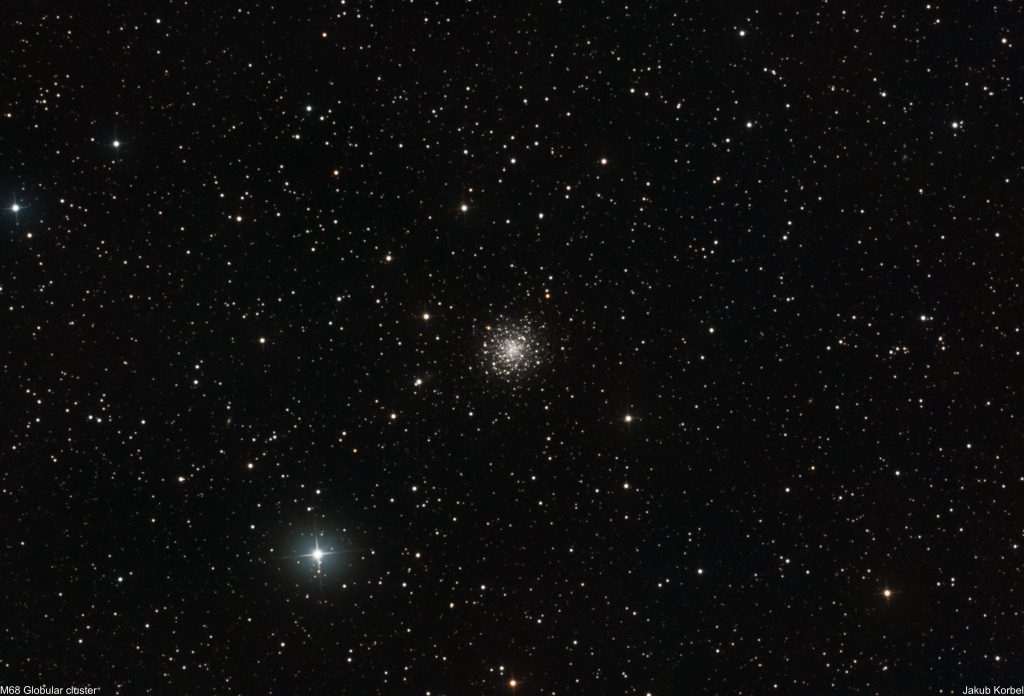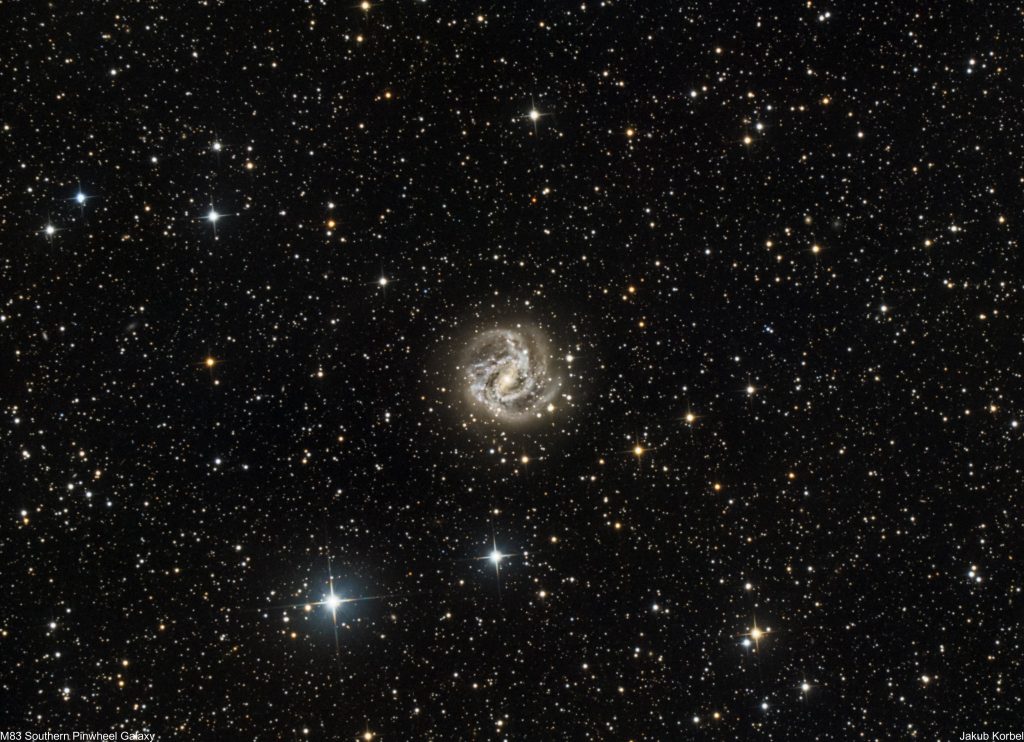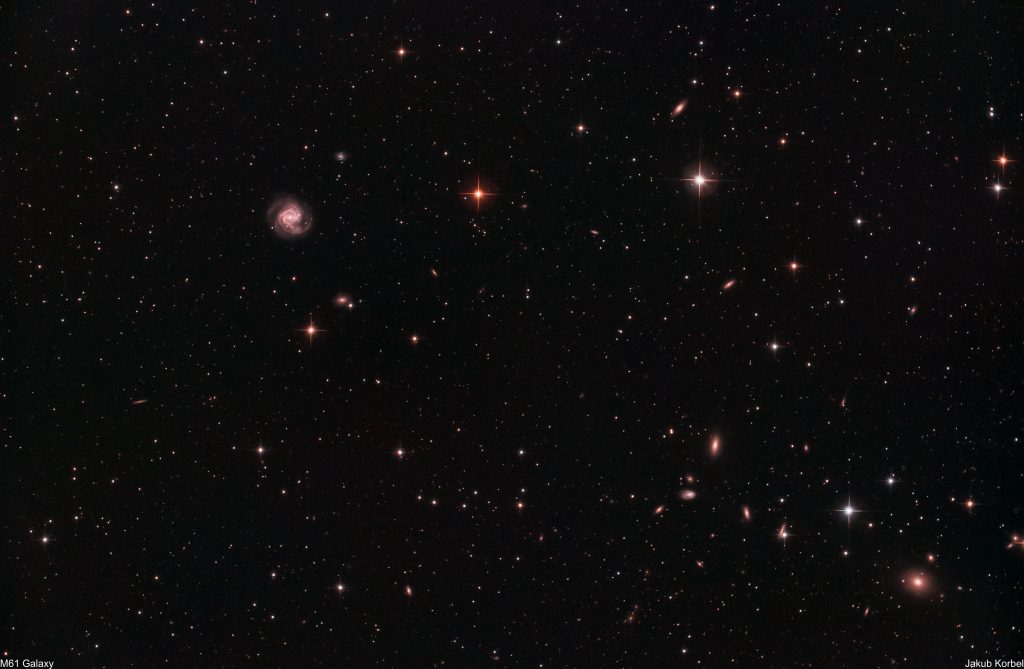Messier 68 is a globular cluster located in constellation Hydra. The cluster contains more than 100,000 stars and it is approximately 33,000 light-years away from Earth. The best time for observation is between March and July. Observers from Central Europe have disadvantage, because M68 doesn’t raise much above the horizon. Therefore this cluster was one of my primary targets on La Palma, where M68 is much better visible. However, the weather was bad and I only got 40 minutes between the clouds.

Technical details:
| Telescope | Newton 150/600 mm |
| Aperture | 150 mm |
| Focal length | 630 mm |
| Mount | Avalon M-Zero |
| Autoguiding | ZWO 174MM, Guidescope 30 mm |
| Camera | ZWO 071 Pro @-10°C |
| Corrector | Explore Scientific HR |
| Filters | Astronomik L-1 - UV IR Block Filter |
| Exposure | 19x120s, Gain 94, bin 1x1, |
| Date | 2019-04-30 |



